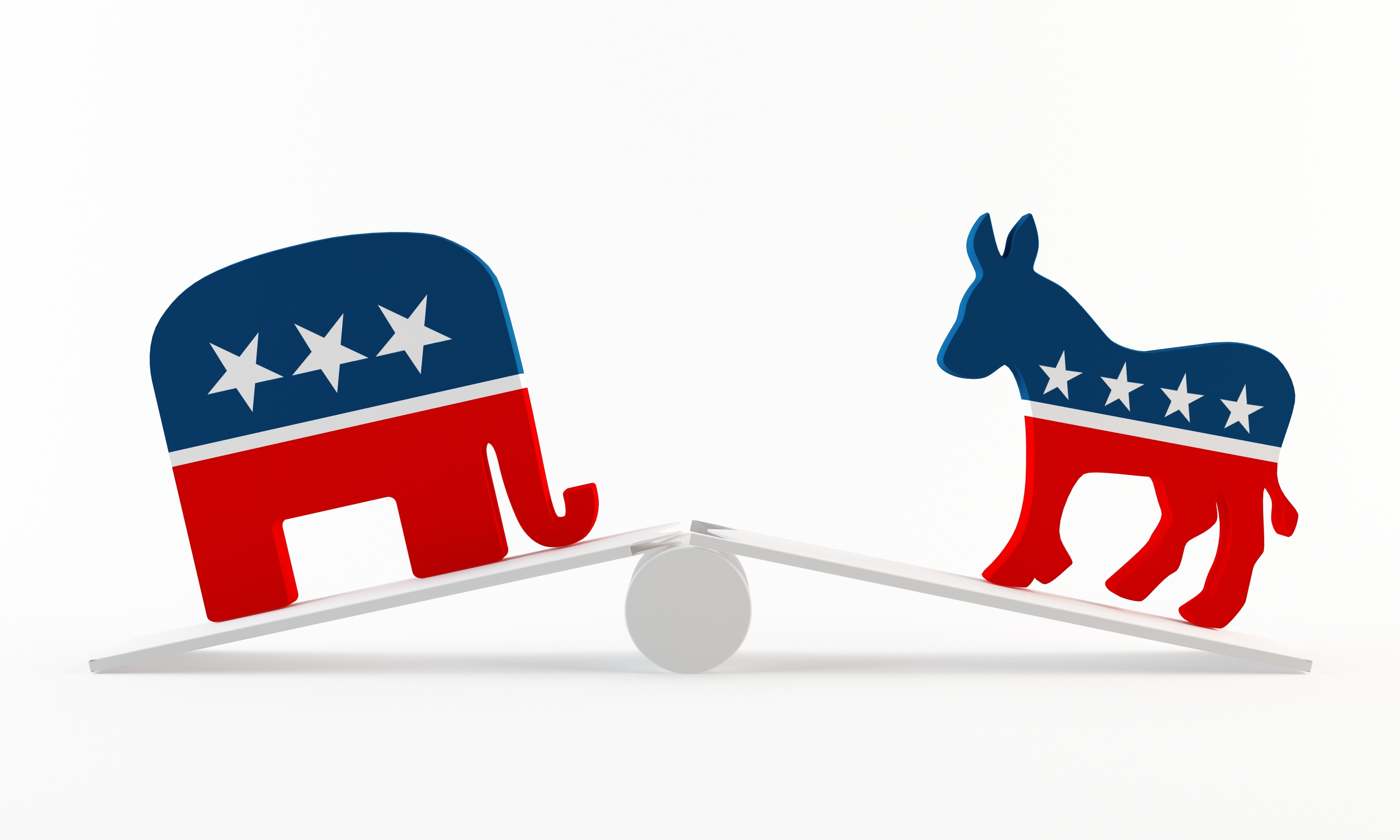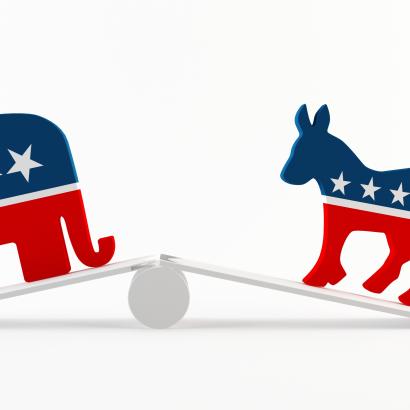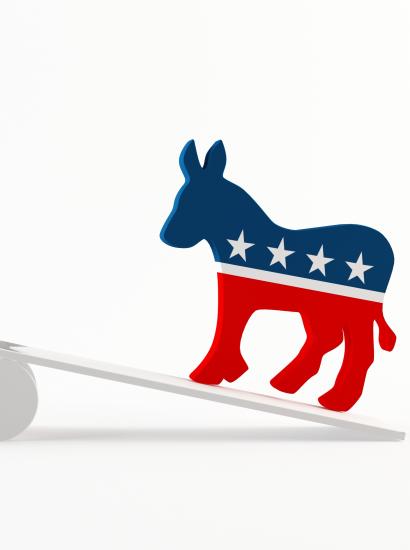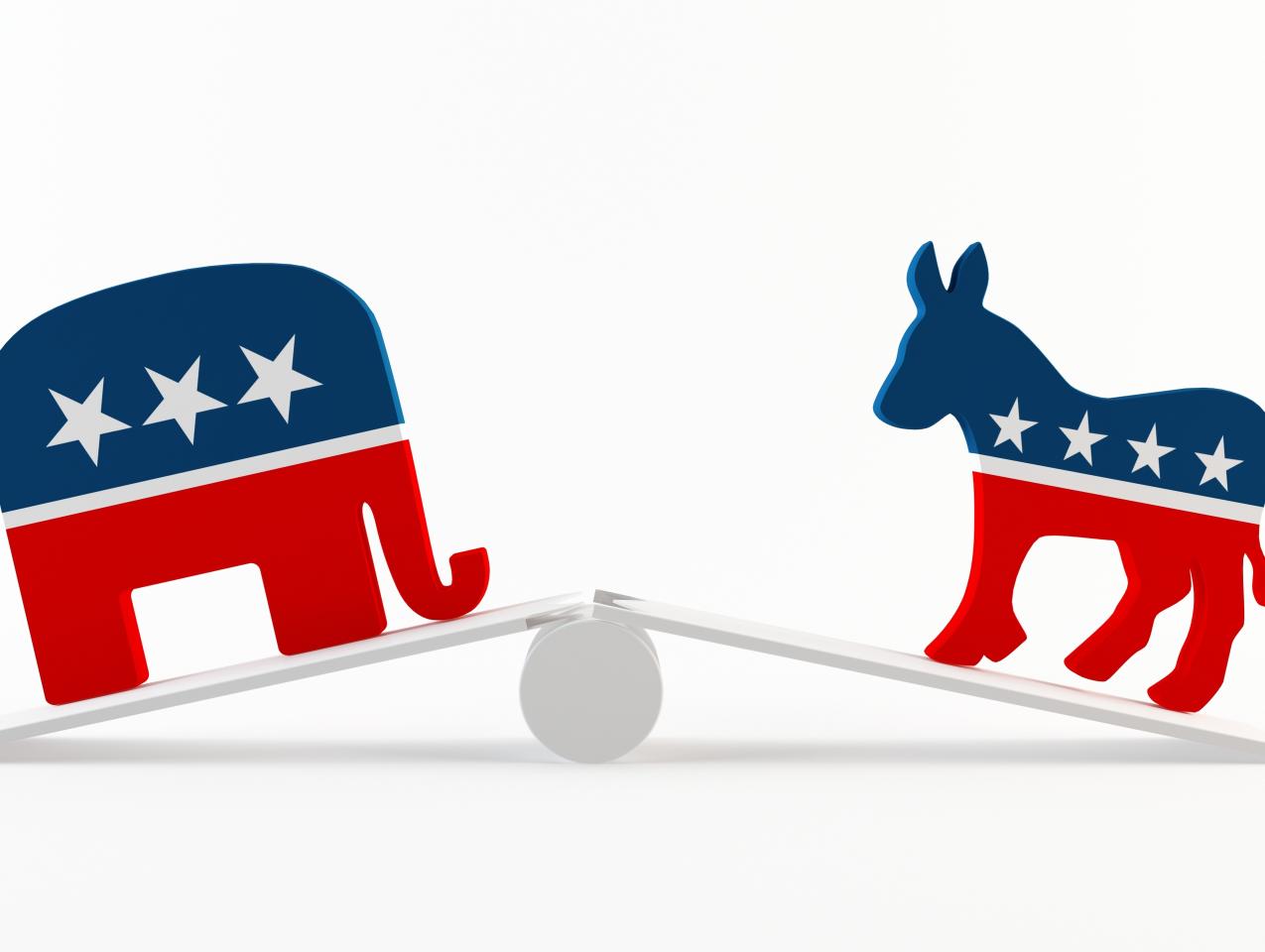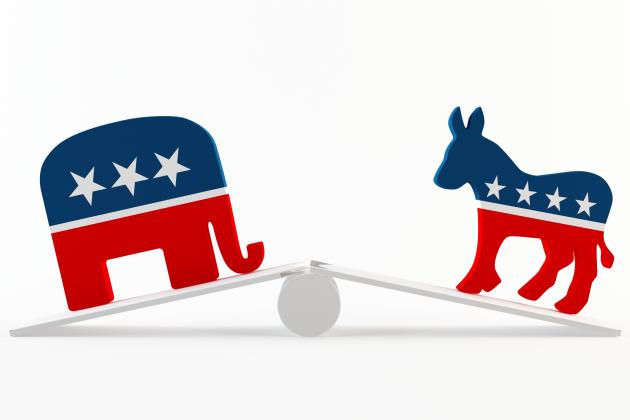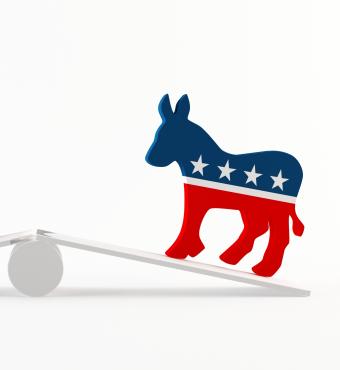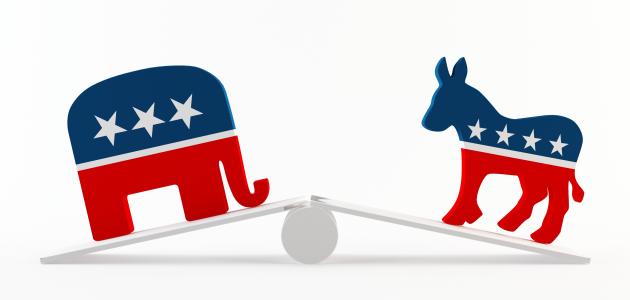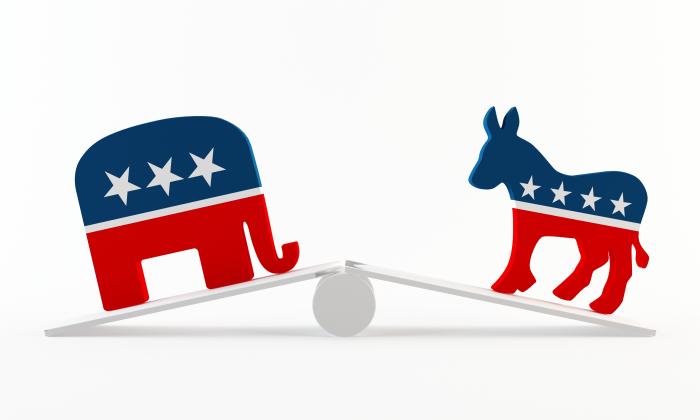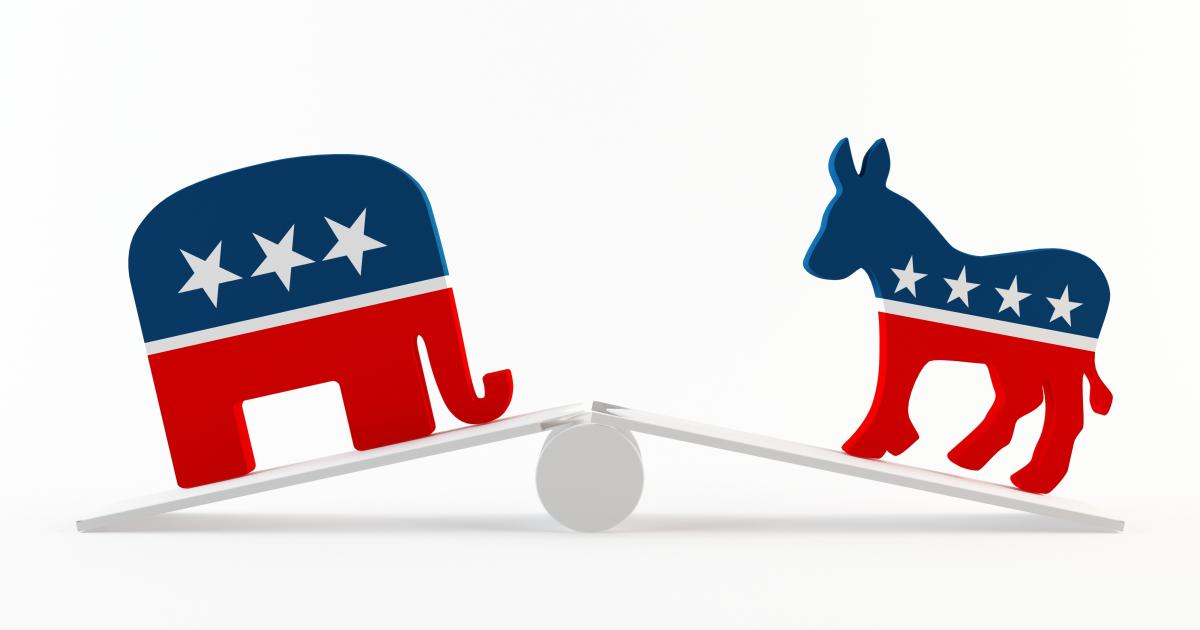Tomorrow is Election Day. The following examines this year’s top races across California making predictions of the outcomes using Political Data, Inc’s valuable vote-by-mail (VBM) data and information from the Secretary of State.
I’ll start with a statewide analysis to describe my methodology.
As of Monday morning, vote-by-mail ballots (VBM) returns are D+4 mirroring 2010 early voting (D+4 in 2010 vs. D+7 in 2012). Assuming a Republican wins 90% of the Republican vote, 10% of the Democrat vote, and 50% of the other vote, going into Election Day, the Republican statewide candidates has 48.3% of the vote.
Assuming VBM voting will be 60% of total ballots (it was 48% in 2010, 51% in 2012, and 69% in the 2014 primary), like VBM returns, the Election Day (ED) vote breakdown mirrors 2010 (D+18 in 2010 vs. D+21 in 2012) and using the same 90:10:50 partisan split (I assume in all cases that VBM partisans and ED partisans vote similarly), the Republican statewide candidate will receive 46.1% of the vote.
But this is likely a best case scenario for most statewide Republicans. For instance, Neel Kashkari has averaged (eliminating undecided voters) in the five October surveys (YouGov/NYT, PPIC, Field, USC Dornsife/LA Times and Hoover’s Golden State Poll) 85% of Republicans. Using the average partisan breakdown from these public polls, Kashkari’s vote share falls to 42.6%.
But 46.2% seems more reasonable for the competitive Controller and Secretary of State races based on the October Field Poll and USC Dornsife/LA Times poll, which tested the down-ballot races. To reach 50% plus one, Ashley Swearengin and Pete Peterson would need to hold onto their GOP base, bump their Independent/Other share to 60% and win at least 15% of Democrats. Doable, but tough.
Congress
CA 7 (Ami Bera, D-Inc vs. Doug Ose, R): Republicans have a slight advantage with VBM returns (40% Dem vs. 41% GOP) suggesting that with the 90:10:50 split, Ose holds the narrowest of leads (50.4%) going into Election Day. VBM returns mirror 2010 (42% Dem vs. 41% GOP), using the 2010 ED breakdown, which slightly breaks unusually toward Republicans (38% Dem vs. 41% GOP), puts Ose up 50.7%. Rating: Toss Up/Tilt R
CA 10 (Jeff Denham, R-Inc vs. Michael Eggman, D): Republicans lead VBM returns (44% to 39%) slightly better than both 2010 and 2012 (both were R+3). In 2012, with a 40%-40% overall voting breakdown, Denham outperformed Obama by 1 point (out of the two-party vote) suggesting he has appeal among non-Republicans. Using, then, a 90:15:55 split and 2012 ED voting, Denham leads going into November 4th and will come out on top with 53.6%, right in line with his 2012 performance. Rating: Likely R
CA 21 (David Valadao, R-Inc vs. Amanda Renteria, D): In 2012, Valadao won this district with 58% besting Obama by two points (out of the two-party vote). So while VBM returns and ED voters will skew Democrat, this doesn’t forestall doom for Valadao. Using a 95:20:65 split (based off a recent poll) and 2012 ED breakdowns, Valadao has a 53% lead going into Election Day and will come out on top with 52.3%. Rating: Lean R
CA 24 (Lois Capps, D-Inc vs. Chris Mitchum, R): This is the surprise contest of the year in California. Based on VBM returns (39% Dem vs. 41% GOP) and a 90:10:50 split, Mitchum leads heading into Election Day with 50.9% and using the 2012 ED breakdown, Mitchum slightly trails with 49.7%. This, however, probably overstates Mitchum’s support due to his Tea Party connections in this light blue coastal district. Hence, using a 90:5:45 split, he falls to a final vote share of 46.6%, putting him more in line with Republican Abel Maldonado’s 2012 vote share. Rating: Toss Up/Tilt D
CA 26 (Julia Brownley, D-Inc vs. Jeff Gorell, R): Gorell fits this district well, but VBM returns are not looking good for the Republican (42% Dem vs. 39% GOP, down from R+5 in 2010 and R+2 in 2012). This suggests Gorell has 49% going into Election Day. Guessing ED voter breakdown is tough, though, since VBM returns don’t mirror 2010 or 2012. Will more Republicans (the ones not voting now) come out or will ED voters lean Democratic like they did in 2010 and 2012? I’m predicting they will split the difference giving Gorell a 49.4% vote share. There is a path for Gorell, but Brownley maintains the edge. Rating: Toss Up/Tilt D
CA 36 (Raul Ruiz, D-Inc vs. Brian Nestande, R): Nestande may still be in this fight (despite the Cook Report’s recent shift for CA 36 to Safe Dem). VBM returns lean Republican (39% Dem vs. 43% GOP) and assuming a 90:10:50 split and 2012 ED breakdown, Nestande leads with 51.3%. But Ruiz won with 53% in 2012 despite R+4 VBM returns and a split ED breakdown; thus, Ruiz garnered decent support from non-Democrats. Assuming a 90:5:45 split, Nestande ends Election Day with just 47.9%. His path is clear, but not solid. Rating: Toss Up/Tilt D
CA 54 (Scott Peters, D-Inc vs. Carl DeMaio, R): VBM returns are currently R+9 (33% Dem vs. 42% GOP), a strong position for DeMaio, but down from an R+15 lead in 2012. Using the average partisan breakdown (without undecided voters) from the three October polls for this district and 2012 ED voter breakdown gives DeMaio a final vote share of 54.4%. Rating: Lean R
Assuming Republican and Democrats win all of the districts that at least tilt their way, national House Republicans will net at least 1 seat from California (CA 31 is a likely Dem pick-up).
Senate
SD 12 (Anthony Cannella, R-Inc vs. Shawn Bagely, D): Like Valadao’s CA 21, we need to take SD 12 and SD 14’s partisan breakdown with smidgen of salt. In the Central Valley, there are Democrats who are very willing to support moderate Republicans, particularly incumbents. Cannella definitely fits that profile. Brown won SD 12 in 2010 with 54% of the two-party vote, but both Steve Cooley and Carly Fiorina won the district with an average of 50.5%. VBM returns are D+5 (they were D+10 in 2012 and D+11 in 2010). Assuming Cannella can pull a 90:20:50 split, he heads into Election Day with 52.5% and using the 2010 ED breakdown, Republicans will hold this seat with 51.6%. Rating: Lean R
SD 14 (Andy Vidak, R-Inc vs. Luis Chavez, D): Vidak won in a special election, but has worked the district as if he is a long-term incumbent. But the VBM returns should give Vidak pause. They stand at D+13, up from D+10 in 2012 and D+6 in 2010. In 2010, Republicans Cooley and Fiorina won the district with an average of 52%, but if the VBM ballots are new Democratic voters (not cannibalizing ED votes), Vidak’s margin of error is very small. Assuming, though, he can win 20% of Democrats and 60% of Independents, Vidak has a 51.2% lead going into November 4th but assuming a 2012 ED turnout, SD 14 is a pure toss-up (50% each). If the 3 point surge in Democratic VBM compared to 2012 is cannibalization, however, Vidak will pull out a narrow, 50.4%, victory. Given the amount of uncertainty going into Election Day, I am not assigning a tilt for this toss-up. Both sides have legitimate paths to victory. Rating: Toss Up
SD 32 (Tony Mendoza, D vs. Mario Guerra, R): This was always a slim pick-up possibility for the Republicans, but between Guerra being a strong candidate and the Calderon family scandal (Mendoza is connected to the Calderons and this is the Calderon’s electoral base), Republicans are hoping for a surprise. It looks unlikely. VBM returns stand at 45% Dem vs. 37% GOP, which mirror 2010’s D+6. Assuming the 90:10:50 split and 2010 ED breakdowns (57% Dem vs. 22% GOP), Guerra will finish with just 42.6%. He needs depressed Democratic turnout on Election Day and a swell in non-Republican support. A 90:20:60 split brings Guerra to 49.5%; if Democratic ED turnout drops 4 points, Guerra would pull off a narrow 50.1% win. Rating: Likely D
SD 34 (Jose Solorio, D vs. Janet Ngyuyen, R): VBM returns have skewed Republican (37% Dem vs. 43% GOP) in line with 2012’s R+6 and below 2010’s R+11. Assuming the 90:10:50 split, Nyguyen leads with 52.5% going into November 4th, but using 2010 ED breakdowns, Ngyuyen falls just short with 49.9%. However, Asian VBM returns (31%) have outpaced VBM registration by 6 points, suggesting a surge in Asian support for Ngyuyen. Given the Democratic lean of Asian voters, this might suggest Ngyuyen is getting stronger cross-over support. At 90:20:50, she easily wins with 53.9%. Rating: Lean R
To prevent a Democratic Senate super-majority, Republicans need to hold SD 12 and SD 14 and pick up SD 32 or SD 34. With SD 34 looking good for Republicans, but SD 14 a pure toss-up, it will be a nail-bitter of an Election Night.
Assembly
AD 16 (Tim Sbranti, D vs. Catharine Baker, R): In 2013, BART went on strike causing a major headache for this San Francisco bedroom-community district. Democrat Steve Glazer campaigned hard on the BART strike issue, but failed to make the top-two; he has recently tacitly endorsed Republican Baker over union-favorite Sbranti. VBM returns have been D+4, in line with 2012’s D+5. Assuming the 90:10:50 split and 2010’s ED breakdown, Baker will trail with 47.7%. But how many of Glazer’s Democratic vote will remain partisan loyals or move over to Baker? Picking up 20% of Democrats pushes Baker to 51.8% and even if Democrats remain loyal, winning 60% of Independents/Other boosts her to a pure toss-up (50%). Rating: Toss Up/Tilt D
AD 36 (Steve Fox, D-Inc vs. Tom Lackey, R): Fox probably shouldn’t be an Assemblyman right now. In 2012, Republicans fell asleep at the wheel and inadvertently yielded this seat to the Democrats. VBM returns stand at 36% Dem vs. 48% GOP in line with 2012’s R+15. If ED breaks down similarly to 2012 – a best case scenario for Democrats – Lackey pulls off a very narrow 50.3% win. But Lackey has been campaigning (2012’s Republican Ron Smith decided not to after winning the primary), so ED voting will probably be a tad less Democratic. Assuming 2010 ED breakdown, Lackey wins with 51.9%. Rating: Lean R
AD 40 (Kathleen Henry, D vs. Marc Steinorth, R): VBM has remained pro-Republican (38% Dem vs. 45%) better than 2012’s R+5 and in line with 2010’s R+8. Assuming the 90:10:50 split, Steinorth holds a 52.8% lead going into Election Day. Using 2010 ED break downs gives Republican Steinorth a 51.3% victory keeping this district in Republicans’ hands. Rating: Lean R
AD 44 (Jacqui Irwin, D vs. Rob McCoy, R): With incumbent Jeff Gorell running for Congress, Republicans are desperately trying to protect this swingy Ventura County-based district. VBM returns don’t look too favorable for them (40% Dem vs. 41% GOP, trailing 2012/2010’s R+6 returns). If McCoy – who is much further to right than this district is – can maintain a 90:10:50 split he’ll lead going into Election Day by a very slim 50.3%. However, the Democratic leaning of the ED voters, will lead to a 48.6% loss for McCoy. Republicans could hope that Democratic VBM voting is cannibalizing their ED votes (shifting Democratic ED voting by 3 points) would move McCoy into striking range – 49.2%. But McCoy’s positions may lessen is cross-over appeal. With a 90:5:45 split (even with the depressed Democratic ED turnout), McCoy garners just 46.1%. Rating: Toss Up/Tilt D
AD 65 (Sharon Quirk-Silva, D-Inc vs. Young Kim, R): VBM returns have been strongly Republican at 37% Dem vs. 44% GOP (in line with 2012’s R+6). With a 90:10:50 split, Kim leads going into November 4th with 53%. Using 2010’s ED breakdown, Kim will win with 51.1%. But Kim may actually do better. Asian VBM returns have outperformed VBM registration and 2012 VBM returns. This is likely from an aggressive GOTV campaign by Kim’s campaign and given Asian Democratic registration leaning, this could mean Kim is getting stronger cross-over. With a 90:15:50 split, Kim gets 53%. Rating: Lean R
AD 66 (Al Muratsuchi, D-Inc vs. David Hadley, R): Republican VBM returns have mirrored 2012, 39% Dem vs. 42% GOP (R+3 in 2012 and R+10 in 2010). Based on VBM results, Hadley has a 51.1% lead going into Election Day assuming the 90:10:50 split. However, if ED voters mirror 2012, Hadley falls short with 48.7%. ED voters very well could mimic 2012’s turnout due to Democrat Ted Lieu’s overlapping Congressional run (he represented this region in the State Senate), but Hadley’s path becomes easier if ED mirrors 2010 (49% with 90:10:50 split) and if he can boost his appeal with non-partisans (50.9% with 90:10:60). This remains a toss-up, but I’m having difficulty assigning a tilt. On one hand, Muratsuchi is the incumbent and Ted Lieu will be pushing turnout in this area – his political base – which should benefit Muratsuchi. But, Muratsuchi was just one of four incumbents in all of California to not place 1st in the primary and in 2010, Whitman won this district with 51% of the two-party vote (8 points better than her two-party statewide vote share), Cooley by 60% (10 point better), and Forinia by 51% (6 points better). And in 2012, Muratsuchi underperformed Assembly Democrats’ two-party statewide vote share 55% to 59% even against a Tea Party-aligned Republican opponent. Rating: Toss Up
Democrats head into Election Day with 51 guaranteed Assembly seats. With 54 needed to win the supermajority, they need to net another 3 seats. Democrats look likely to pick up AD 44, but Republicans will likely hold AD 40 and pick up AD 36 and AD 65. AD 16 tilts Democrat, but Republican Catheraine Baker still has a path to victory. Whether Republicans can stave off a Democratic super-majority potentially comes down to AD 66.
Obviously these are not all of the contested races in California. CA 31 and 33 both are somewhat competitive and same-party contests in CA 4, CA 7, and CA 25 should all be interesting. In the Assembly, AD 21, AD 32, and AD 57 have all received some attention from both parties. But at the end of the day, these are the races that appear to be most hotly contested. Tomorrow evening, we’ll find out if that is true.
Follow Carson Bruno on Twitter: @CarsonJFBruno.
Carson Bruno, a Hoover Institution research fellow, studies California's political and policy landscape.







